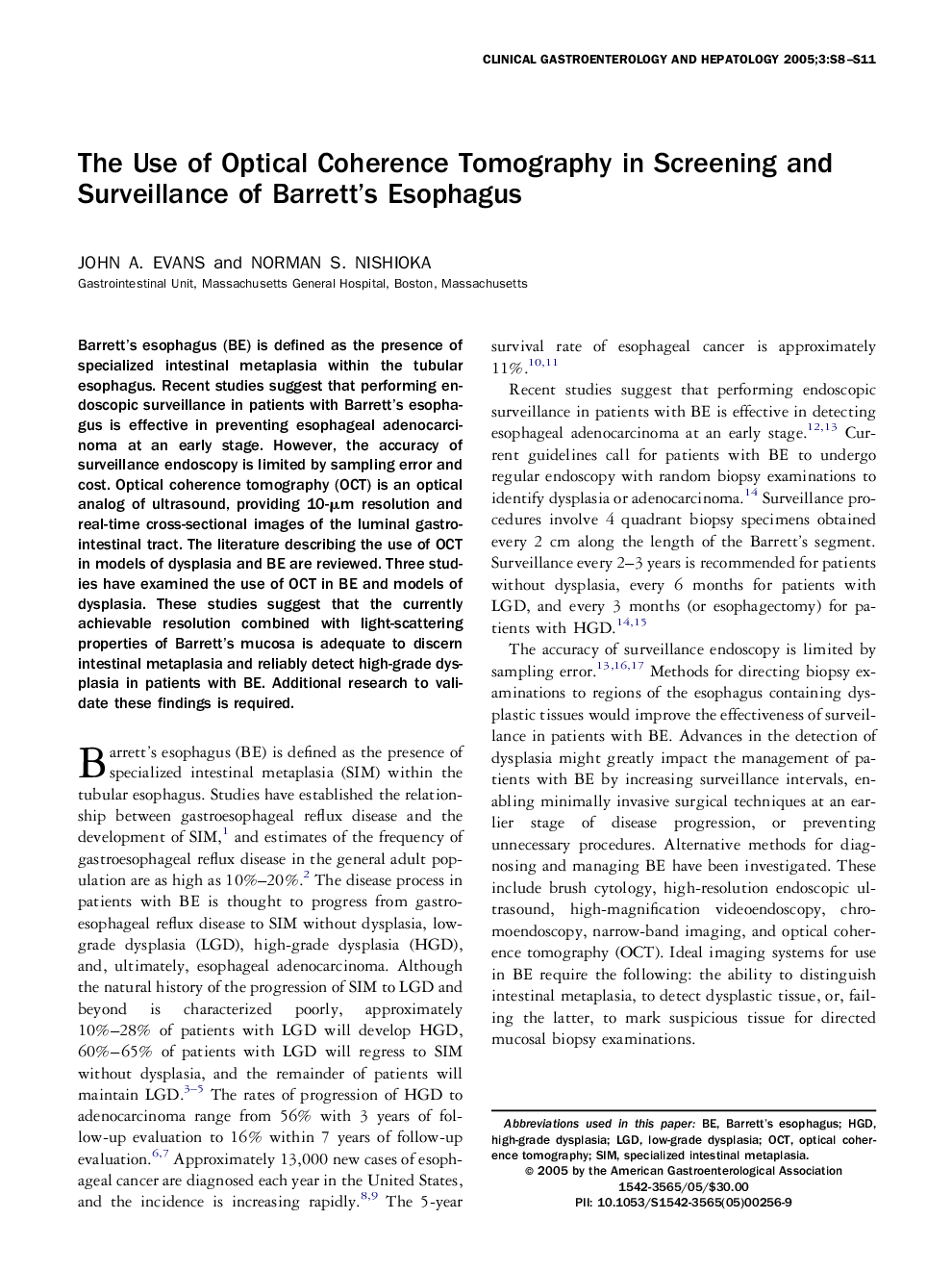| Article ID | Journal | Published Year | Pages | File Type |
|---|---|---|---|---|
| 9242006 | Clinical Gastroenterology and Hepatology | 2005 | 4 Pages |
Abstract
Barrett's esophagus (BE) is defined as the presence of specialized intestinal metaplasia within the tubular esophagus. Recent studies suggest that performing endoscopic surveillance in patients with Barrett's esophagus is effective in preventing esophageal adenocarcinoma at an early stage. However, the accuracy of surveillance endoscopy is limited by sampling error and cost. Optical coherence tomography (OCT) is an optical analog of ultrasound, providing 10-μm resolution and real-time cross-sectional images of the luminal gastrointestinal tract. The literature describing the use of OCT in models of dysplasia and BE are reviewed. Three studies have examined the use of OCT in BE and models of dysplasia. These studies suggest that the currently achievable resolution combined with light-scattering properties of Barrett's mucosa is adequate to discern intestinal metaplasia and reliably detect high-grade dysplasia in patients with BE. Additional research to validate these findings is required.
Keywords
Related Topics
Health Sciences
Medicine and Dentistry
Gastroenterology
Authors
John A. Evans, Norman S. Nishioka,
